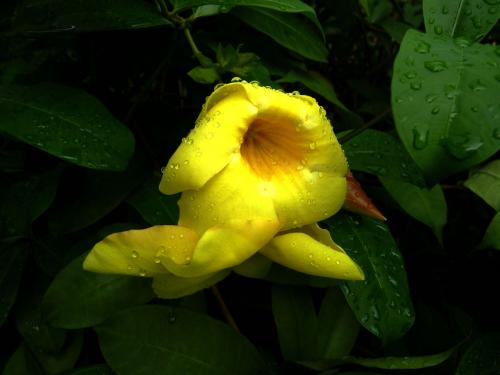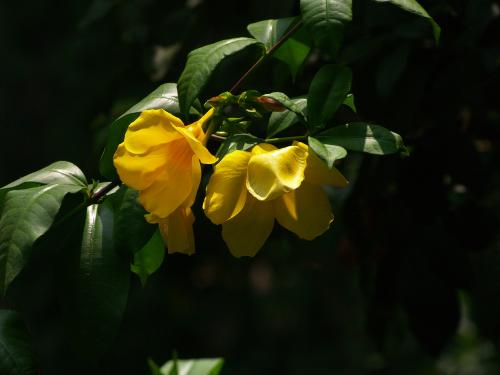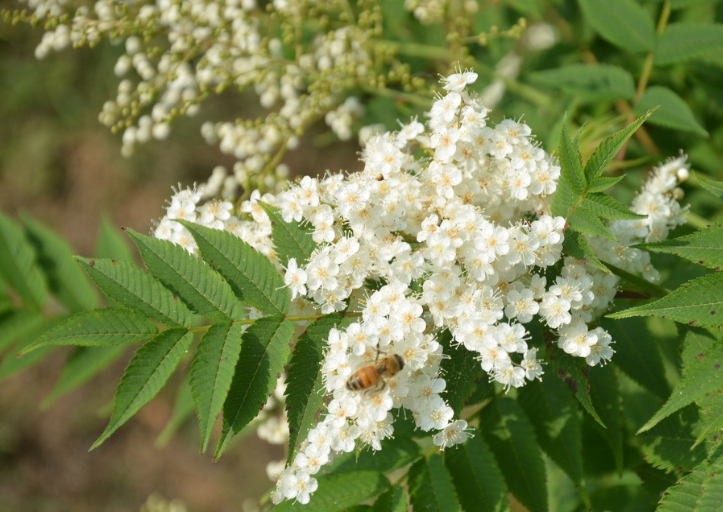Culture methods and matters needing attention of yellow cicada
1. Location and lighting
Yellow cicadas like hot, humid and sunny environments, so put them in the courtyard or in places with direct sunlight, but be careful not to breed them indoors to avoid accidental poisoning.
Second, watering
Yellow cicadas are resistant to water and like a humid environment, so they should be watered frequently during the long period of time, but less in winter.
3. Soil
Yellow cicadas do not have high requirements for soil, just like other plants, they all need soil with rich soil and good drainage, which can promote the growth of yellow cicadas.
IV. Fertilization
For the yellow cicada, it needs enough nutrients to grow better, so it is necessary to fertilize the yellow cicada regularly, usually every half a month.
V. Disease and pest control
Although yellow cicadas are poisonous, yellow cicadas still have pests and diseases, and insecticides should be sprayed as soon as pests are found, which is not only fast but also effective. If it is found that the yellow cicada flower is infected by the virus, cut off the diseased branches, so simple and fast, but be careful not to touch the sap of the plant.

All right, that's all for today. I hope the editor's content can be helpful to you! Thank you for your reading!
Culture methods and matters needing attention of red cicada flower
Latin name Mandevilla sanderi
Don't call it safflower Wencheng.
The plant kingdom.
Family Apocynaceae
The distribution area originated from Brazil.
Red cicada flower, plant height about 20-40 cm, the whole plant has white body fluid. It is suitable for potted plants or garden planting and beautification, but not suitable for shade shed plants.
1. Morphological characteristics.
Leaves opposite, long heart-shaped, smooth on both sides. The Summer Solstice autumn flowering, funnel-shaped flowers, Corolla 5-lobed, pink, flower tube expansion is bright yellow, delicate and beautiful flowers.
2. Growth habits
Sex likes high temperature, the suitable temperature for childbearing is 22 ~ 28 degrees, and it should be warm and avoid the wind in winter.
3. Main varieties
1, Moulin Rouge double glandular vine; is a hybrid variety, which won the French International Horticultural Flower Gold Award in 2007. Features, large and colorful flowers, light purple at the beginning, deep purple in full bloom, long flowering period.
2, double double glandular vine; double variety of Moulin Rouge. The characteristics are the same as above, with larger flowers, double petals and higher ornamental value.
3, purple double-glandular vine, characterized by shorter plants, densely arranged leaves, smaller flowers, deep purplish red, and yellow throat.
Lovely double-glandular vine; characterized by emerald-green leaves, narrowly ovate leaves, large flowers, trumpet-shaped, white, throat yellow, strong flower fragrance, flowering in summer.
5, yellow flower double glandular vine; characterized by soft branches, narrowly ovate leaves, sparse, yellow flowers, a star-shaped ring in the center, unique shape, rich flower fragrance.
6, Bolivian double-glandular vine; characterized by short plant shape, dense leaves, white flowers, yellow throat, flowering all the year round.
Culture methods and matters needing attention of purple cicada flower
Latin name Allamanda violacea
Also known as purple flower yellow cicada
The plant kingdom.
Phylum spermatophyta
Subphylum angiosperm
Dicotyledonous class
Gentiana
Family Apocynaceae
Belonging to the genus Cicada
Distribution area Brazil, Guangxi, China; Guangdong; Fujian; Taiwan; Beijing
The florescence is 3-4 months.
The growth habit likes high temperature.
The stem of purple cicada is trailing, and the whole plant has white body fluid. Leaves 4 whorled, long elliptic or Obovate-lanceolate. Flowering from late spring to autumn, axillary, funnel-shaped, Corolla 5-lobed, dark pink or purplish red, soft and pleasing to the eye, the florescence is as long as 3 Mel 4 months. Purple cicada, beautiful woody flowers, like warm, moist, suitable for red soil, native to Brazil, is a wild resource (individual), this variety is of high quality, stress resistance, the main use is for ornamental
1. Growth habits
The sex is fond of high temperature, and the suitable temperature for childbearing is 23 ~ 30 degrees.
2. Species distribution
It is native to Brazil. 3. Reproduction and cultivation
Using the cutting method, the suitable period is from spring to autumn. The ripe branches were cut obliquely in the river sand and rooting for about 3 mi in 4 weeks. The fertile sandy loam is the best for cultivation, and the drainage and sunshine are good.
4. Horticultural use
Suitable for large potted plants, hedges or small flower sheds for beautification, not suitable for shade sheds.
- Prev

The planting mode of yellow cicada flower
The first way-sowing and planting should first collect the seeds of yellow cicadas, but the seeds of yellow cicadas are not hidden for a long time, so it is best to sow after picking. The second way is to plant strips and choose the branches near the ground, then cut the branches and press them into the soil.
- Next

Second, the precautions for pearl plum farming
1. When planting a single plant of pearl plum, it is generally not necessary to fertilize, but it must be irrigated frequently, especially in spring and summer drought seasons to keep the soil moist. Irrigate enough winter water before winter, and protect it from overwintering in cold areas. 2. Pearl plum can spray flowers in the bud stage to promote strong buds, large petals, gorgeous colors and rich flowers
Related
- Fuxing push coffee new agricultural production and marketing class: lack of small-scale processing plants
- Jujube rice field leisure farm deep ploughing Yilan for five years to create a space for organic food and play
- Nongyu Farm-A trial of organic papaya for brave women with advanced technology
- Four points for attention in the prevention and control of diseases and insect pests of edible fungi
- How to add nutrient solution to Edible Fungi
- Is there any good way to control edible fungus mites?
- Open Inoculation Technology of Edible Fungi
- Is there any clever way to use fertilizer for edible fungus in winter?
- What agents are used to kill the pathogens of edible fungi in the mushroom shed?
- Rapid drying of Edible Fungi

